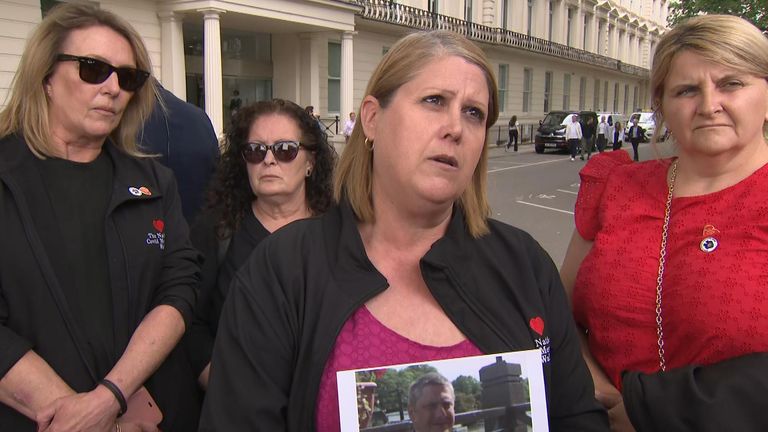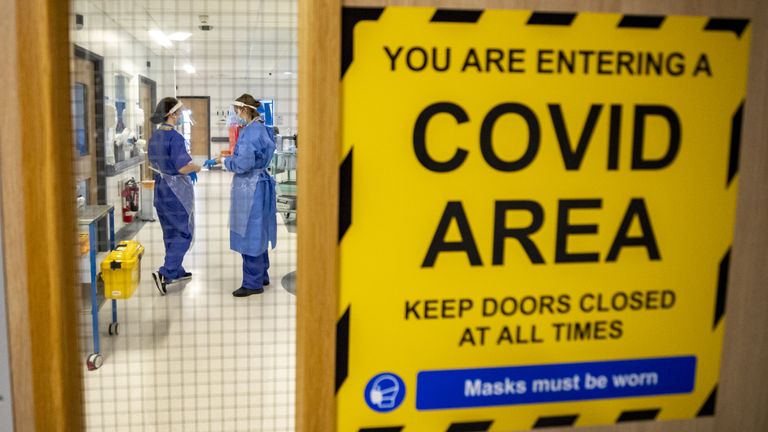COVID-19: 167,000 people may have caught coronavirus in hospital in England during second wave, study suggests | UK News
Up to 167,000 people may have contracted coronavirus in hospitals in England during the second wave of the pandemic, a study of healthcare-related infections has suggested.
Scientists who assessed COVID infections between June 2020 and March 2021 said their findings show how many cases started in hospitals and why, noting factors such as limited numbers of single rooms.
They concluded that hospitals needed to be better equipped to limit the transmission of future viruses.
Hospital transmission puts vulnerable people at risk, affects healthcare workers and potentially drives transmission in the community.
But despite the obvious risks, there hasn’t been much work done to assess the extent of the problem.
A team from Oxford University, led by Professor of Epidemiology, Ben Cooper, have tried to put that right by studying data from 145 English NHS acute hospital trusts, representing a combined 356 hospitals with around 100,000 beds.
They looked at the number of COVID infections, how many staff working days were missed because of the virus and how the likely source of infection was classified at the time.
They found nearly 17,000 (16,950) infections in hospital patients were classed as having definite links to healthcare, and more than 19,000 (19,355) were thought to probably have a healthcare connection.
However, the researchers calculated that only around one in four (26%) of such infections might actually have been recorded, as many patients may have been discharged before testing positive, for example.
Once they factored that into their projections, they estimated that hospital-acquired infections in the period were between 95,000 and 167,000.
In other words, 1 to 2% of all hospital admissions likely resulted in such an infection over the study period.
Professor Cooper’s team found geographical variations in the incidence of infections, with the highest rates in northwest regions of England, and the lowest in the South West and London areas.
Read more:
Boris Johnson’s wife, Carrie, was ‘real person in charge’
Up to 200,000 to be monitored for COVID this winter
Johnson asked if govt ‘believes in long COVID’, inquiry told
They suggested the low availability of single rooms and reduced heating of hospital buildings could play a part.
The vaccination of healthcare workers was another driver of lower infection rates.
Their findings could show hospitals how to reduce transmissions, which in turn could protect vulnerable patients and healthcare workers, as well as reduce community transmission in the future, the authors said.
The COVID-19 public inquiry was told on Tuesday that fewer people might have died if lockdown had started sooner.



